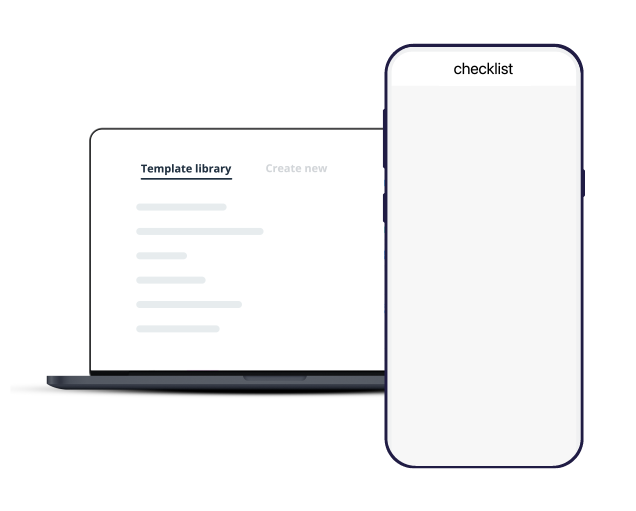Use our free business plan template to create a plan from start to finish
Business Plan Free Template

Make work flow with Connecteam’s digital forms & checklists
- Easily create digital forms and checklists for any task your team needs to complete on the job
- Boost accountability by having employees add a signature, image, or location stamp
- Save time by choosing from a variety of ready-made templates
- Instantly receive your team’s submissions and share reports within your organization
- Use AI to convert PDFs, Excel files, or images into digital forms in seconds—no manual work needed

Business Plan Free Template
A business plan is a map that will help guide your business from the initial phase to formulation to profit and growth. Basically, a business plan describes how your new business will grow from start to finish. However, there is a business plan template suited for the type of business you want to open, if you’re looking for a simple business plan template, then we have the best business plan free template to get you started.
What is the benefit of using a business plan template? Well, the best business plan template helps organize your thoughts. Instead of thinking endlessly, a business plan template offers you a guideline of where to get started, how to go from there and makes sure you don’t miss a step.
Business Plan Template
Title Page
Add all of your business information, from the name to the address and so on. If you a business logo, be sure to add it to the bottom or top of the title page.
- Business Plan for ABC Company
-
- Date
- Address of business (if you have a physical location)
- Phone number (personal and if your business has one)
- Website
Table of Contents
- Executive Summary……………………………………….Page #
- Business Description…………………………………….Page #
- Market Strategies………………………………………….Page #
- Competitive Analysis……………………………………..Page #
- Design and Development Plan………………………..Page #
- Operating Plan……………………………………………..Page #
- Financial Plan……………………………………………….Page #
1: Executive Summary
Write your executive summary last, even though it starts off the business plan. This is because the executive summary is a short and concise overview of what your business plan will outline. Make sure the executive summary is not longer than two pages.
Outline the following in your mission statement:
- Describe the need for your new business.
- Introduce your company, the management and ownership.
- Describe what main product is and the service you offer.
- Briefly describe your target base and how your business serves them.
- Summarize your competitive advantage.
- Briefly outline what your financial projections are for the first two years.
- Describe your financing requirements, if relevant.
2: Business Description
The business description includes a short description of the industry. Be sure to discuss the current outlook and future opportunities your industry faces. Include the following details:
- What is the overall nature of the industry? Include statistics like trends and demographics, and also economic, cultural, and governmental influences.
- Describe how your business fits into the industry.
- Mention any existing competition.
- Describe what you are targeting and what is unique about your business compared to the competition.
3: Market Strategies
This is when you prove you have thoroughly analyzed the target market and that your business is in demand. You need to show that your product/service is in demand and include an estimate of the market size and how many units of your product/service you expect to sell. Based on your estimate, compare that to your competition and summarize the results in a table or chart.
4: Competitive Analysis
Describe the strengths and weaknesses of the competition in your market, your strategies that will give you an advantage, what your pricing strategy is, how you will prevent competition from entering your market, how you plan to advertise, and what weaknesses can be exploited.
5. Design and Development Plan
Describe the product’s design, its development in terms of production, marketing, and create a budget that ensures you’ll reach your goal(s).
Cover the following in this section:
-
- Product development: follows the technical and marketing aspects of the product.
- Market development: marketing personnel required and their salary so you can develop pre-promotional materials and include your marketing campaign.
- Organizational development: outline your requirement process, integration process, and management plan.
6: Operating Plan
Include the plan for the physical requirements your business requires, such as the office, equipment, supplies, etc.
- Development: possible locations, equipment sources, supply chains and so on.
- Production: how long will production take, when can you begin and outline how you’ll handle problems, like rush orders.
- Facilities: what is the physical location and what are the building requirements, include mortgage or leasing costs, maintenance, utilities, and zoning approvals.
- Staffing: how many employees will be employed, what are their job duties, are they full or part time, and what training is needed, plus how training will be provided.
- Equipment: what equipment is needed, its cost, and if it is leased or purchased (include the source of each).
Section 7: Financial Plan
The final section, the financial plan, is key because it highlights if you are financing or intend to attract investors. It outlines how your business will grow and how it will be profitable. You need to include projected income statements, cash flow statements, and balance sheets. The financial plan answers: where the money comes from, when and how the money arrives, what projections you have, and what you need to consider.
(NOTE: Underestimate revenue and overestimate expenses).
📚 You might be interested in reading:
- The best employee training software of 2025
- The best employee scheduling apps of 2025
- The top free hr software for 2025
Related templates:
Create a Business Confidentiality Agreement to protect your IP
Create an Employee Confidentiality Agreement to establish a contract between you and the new hire
Watch the video below to see it in action:

Ready to boost your efficiency with our pre-made templates?